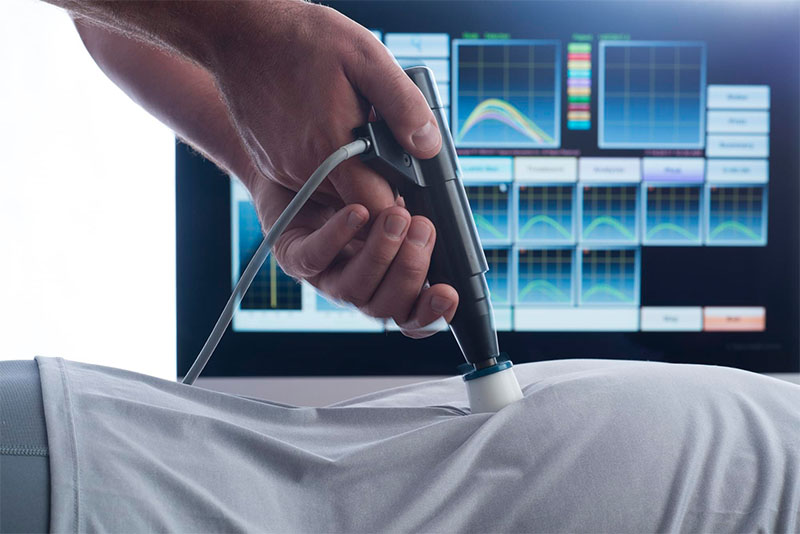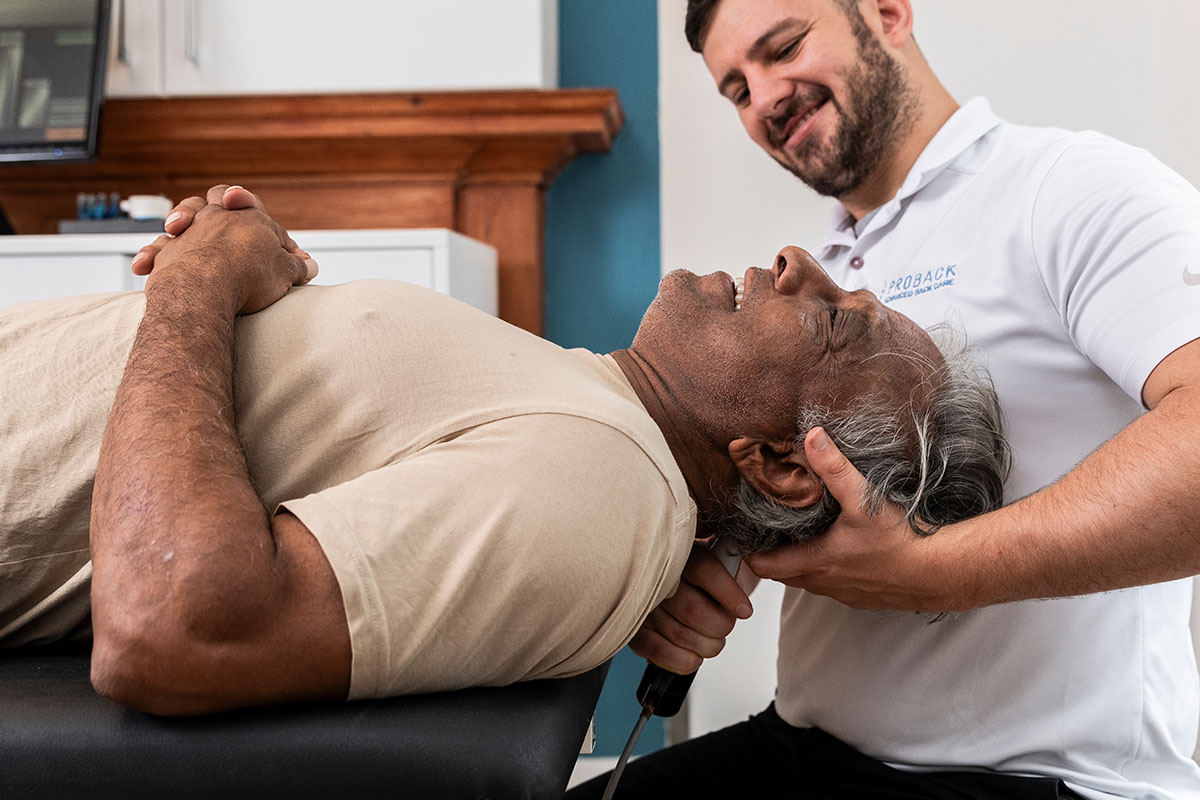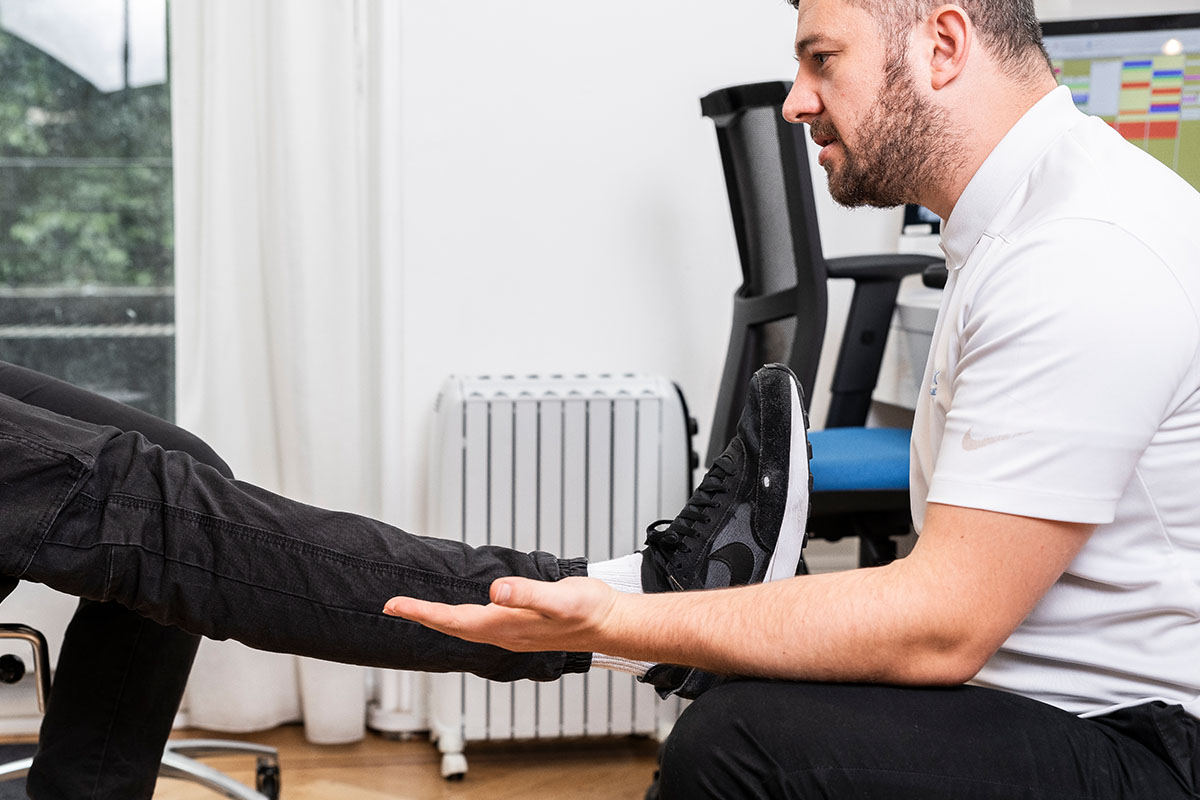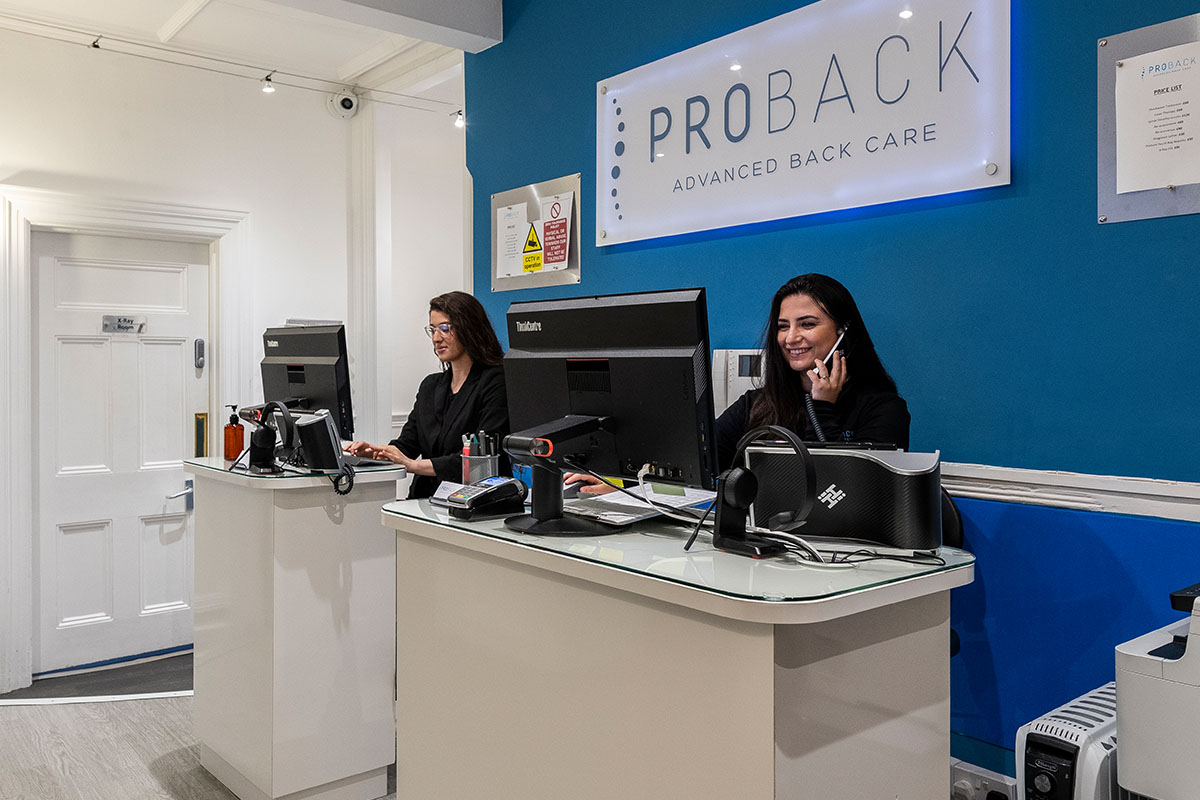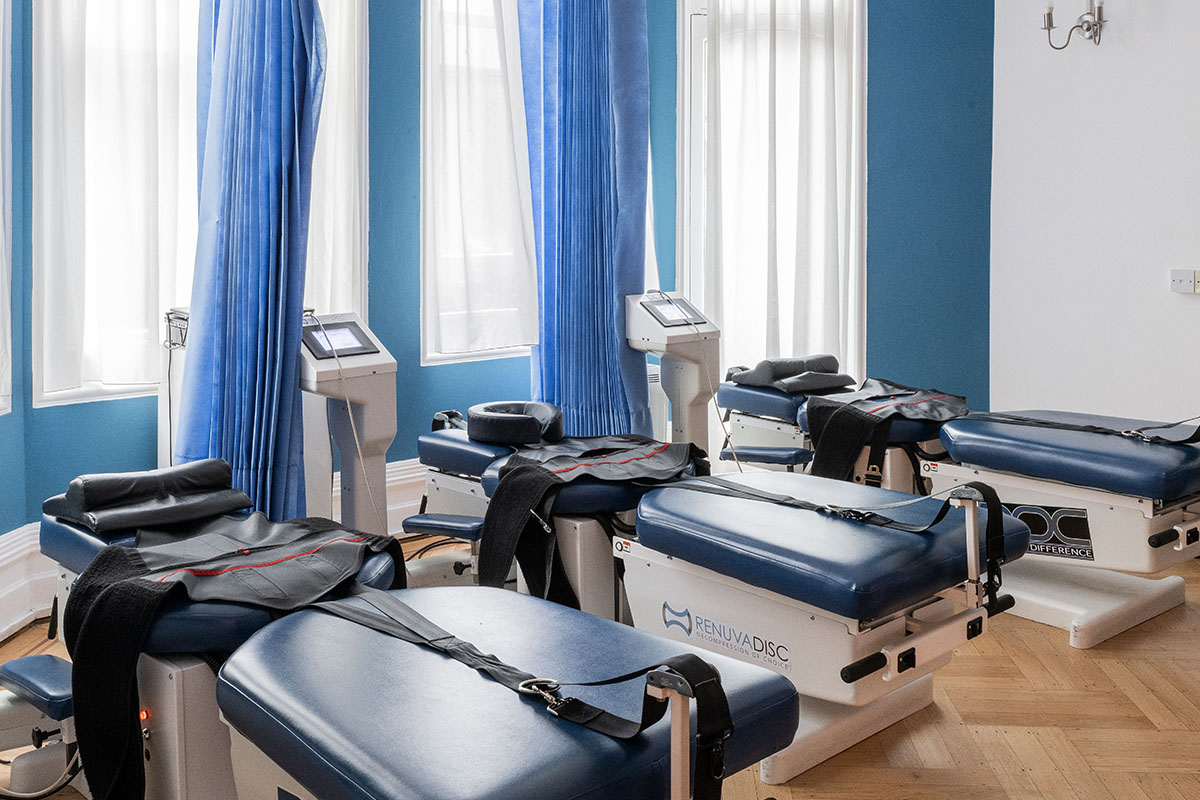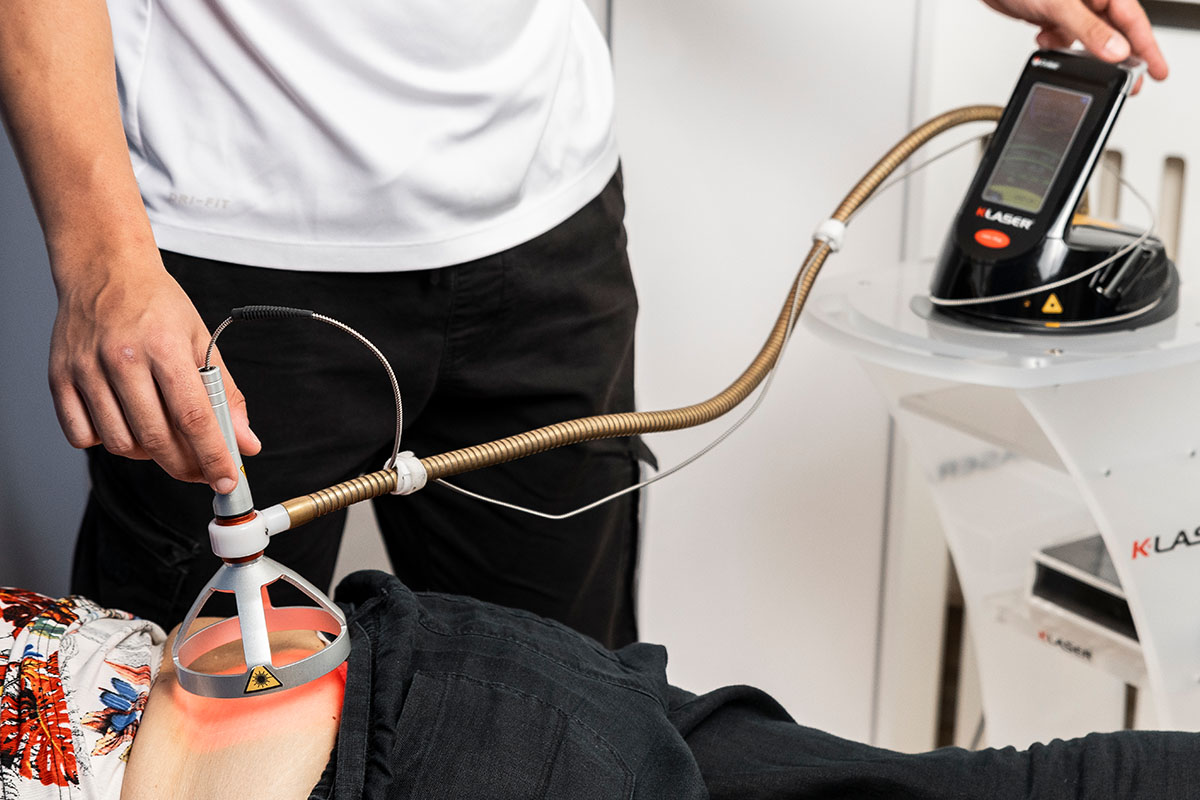
Knee Pain
Many people live withknee clicking and painfor months, hoping it will fade on its own. Painkillers may reduce soreness, but they rarely address the root cause. Left untreated,knee pain and clickingcan become more severe, making everyday movements like walking, bending, or climbing stairs increasingly difficult.
At Proback Clinics, we treat more than symptoms. Using advanced, non-surgical treatments such asK-Laser therapy, shockwave therapy, spinal decompression, and Prolozone and Prolotherapy injections, we target both the source ofknee clicking painand the surrounding structures to support proper healing.
That’s why patients searching for “knee clicking and pain when walking”, “clicking knee joint specialists near me”, or “why is my knee clicking and painful” often chooseProback Clinics in London Victoriafor lasting relief.
Treating Knee Pain
The knee is a joint that bears the weight of your body on a day-to-day basis, so it’s unsurprising that knee injuries are extremely common. You are more likely to suffer knee injuries if you play sports that involve sudden turns, like football, tennis or running. Knee pain can also be caused by wear and tear from everyday activities.
Causes of Knee Pain
Common conditions that can cause the above symptoms include:
Ligament Damage
Most often caused by trauma from a sudden change of direction. The knee has four ligaments at the front, back and on both sides. If damaged, the ligament will be swollen, cause pain on movement, and you may be unable to put weight on the knee.
Meniscus Tear
A meniscus tear is a common injury among athletes, and can happen when the knee is suddenly twisted. The tear occurs to a piece of cartilage located between the femur and the tibia, which absorbs shock in the knee. This condition causes pain, swelling and sometimes a crunching sound can be heard when moving the knee.
Knee Bursitis
A bursa is a small sac of fluid which protects the knee joint, so that the tendons and ligaments can move easily. If this is damaged, the knee can become swollen.
Osteoarthritis
A wear and tear condition caused by the loss of cartilage in a degenerating knee. People with osteoarthritis may experience pain, stiffness and perhaps clicking or crunching sound within the knee. With osteoarthritis, the joint in the knee becomes much weaker, this can leave you more prone to fractures.
Fracture
A knee fracture can be caused by a sudden trauma to the area. This is likely to mean severe pain when touching the area or when moving.
Tendinitis
Tendinitis is a direct result of overuse of the patella tendon. The knee may become very swollen and it can hurt to bend the knee normally when going up or down stairs.
Patellafemoral Pain Syndrome (or ‘Runner’s Knee’)
The most common injury caused by running. Those with runner’s knee may have a pain around or behind the kneecap. This can make everyday activities like walking up or down stairs, or sitting painful.


Symptoms of a Knee Injury
The symptoms of knee pain vary depending on the condition, but these are the most common:
- Swelling
- Stiffness in areas of the body
- Unable to bend or straighten the knee
- Hot to the touch
- Instability
- A clicking or crunching sound in the knee

Our Knee Pain Treatments
The first step in treating knee pain is finding the underlying cause. A thorough examination at one of our ProBack Clinic in London will help identify exactly what’s causing the problem. After a diagnosis is made, treatment can be undergone to relieve the pain, correct the problem or prevent it from recurring in the future.
- For conditions that cause swelling and inflammation, our K-Laser therapy can be the best approach. The K-Laser passes through the skin into the tissues of your knee, generating energy into the cells. This can increase blood flow to the area which helps to pump nutrients into the knee. This quickens the natural healing process of damaged tissues.
- For many forms of knee pain and stiffness, prolotherapy or Prolozone therapy are an excellent form of treatment. Prolotherapy tends to be efficient in treating the ligaments and stabilising the knee joint and Prolozone tends to be efficient at rejuvenating the synovial fluid that feeds the cartilage whenever injected into the knee. Often, we use a combination of prolotherapy and Prolozone in order to achieve the best results.

Why Patients Choose Proback for Knee Pain Treatment London
When searching for “knee clicking clinic near me” or “knee pain treatment London”, patients choose Proback Clinics because we provide:
- Same-day and next-day appointments in London Victoria
- Evening and weekend availability
- Over 15 years’ experience treating chronic knee pain and cracking
- A unique combination of therapies under one roof
- A holistic, patient-first approach that avoids unnecessary surgery
Knee Pain Treatment Near Me – Proback Clinics London
If you’ve been searching for:
- Knee clicking and pain specialists London
- Clicking knee joint treatment near me
- Knee clicking when bending or straightening leg solutions
- Help for crunching sound in knee with pain
- Treatment for knee clicking after injury
- Support for knee is clicking and hurts or clicky sore knee
- Relief from knee gives out with sharp pain
…then Proback Clinics inLondon Victoriais here to help. Our expert team is ready to guide you from persistentknee clicking and sore jointsback to strength, mobility, and pain-free living.
FAQs
Ligament damage or injury around the knee and thigh is one of the most frequent conditions that we treat at ProBack clinic. Ligament instability of joint hypermobility tends to cause and accelerate arthritis and degeneration of the cartilage in the knee. Knee conditions can also be brought on by other problems within your body. For example, an issue in the spine can make joints move incorrectly. This can create more pressure on the knee as it bears the weight of the body.
Often, knee conditions are difficult to heal because there isn’t enough blood flow in the area or a lack of mobility in the body is putting more pressure on the knees. Since there is no or very limited blood flow to the ligaments after the age of 25 years old, ligaments tend to not heal well if injured. Prolotherapy specialises in injecting the junction between the bone and the ligament attachment with a dextrose solution in order to reactivate blood flow into the ligaments. Once a ligament starts to have some blood-flow again, it tends to strengthen, become more flexible again and the patients usually feel a significant reduction in pain.
Shockwave therapy works by using a tapping (percussion) motion to break down scar tissue and improve the movement in the joint. It also helps the circulation of blood flow to the joint, allowing nutrients to enter the area creating the ideal healing environment.
To rehabilitate the knee area, we need to find the underlying cause of the problem. To do that, we carry out a thorough examination so we can understand the condition of your body and your individual needs. For some people, going straight into exercising an injured area is a very bad idea – it can cause more harm than good. Instead, we recommend introducing gentle exercises once your condition has improved and exercises are tolerable. For patients whose injuries have been caused by sports or working out at the gym, we advise that they should stop their gym or training programme until their condition is well managed.
Use the form below to book a consultation.
Consultation includes examination, x-ray (if required) and results.
We typically reply within 60 minutes during opening hours.
Award-Winning Treatments
Gentle Non-Surgical Chiropractic Therapy
Inside Proback
5 Minutes From London Victoria Station
Use the form below to book a consultation.
Consultation includes examination, x-ray (if required) and results.
We typically reply within 60 minutes during opening hours.
Accreditations



How To Find Us
Flat 4, Evelyn Mansions,
Carlisle Place, Westminster,
London, SW1P 1NH
Opening Times
Weekdays 8.30am - 8pm
Saturday 9am - 3pm

020 7976 6648





